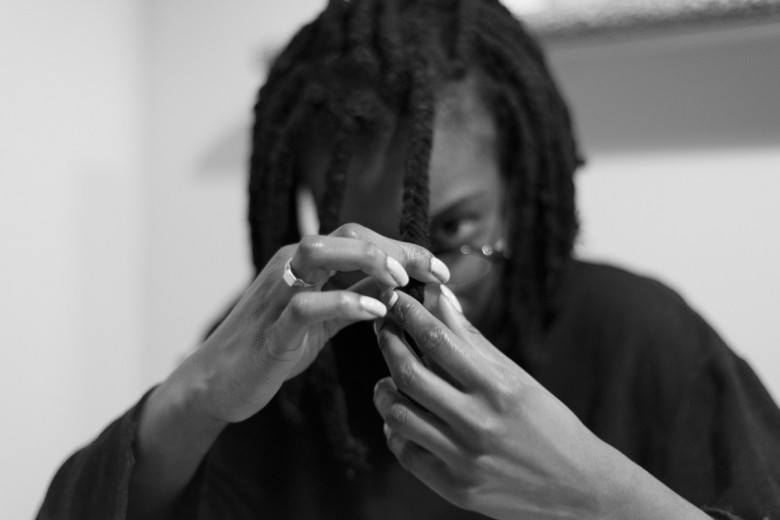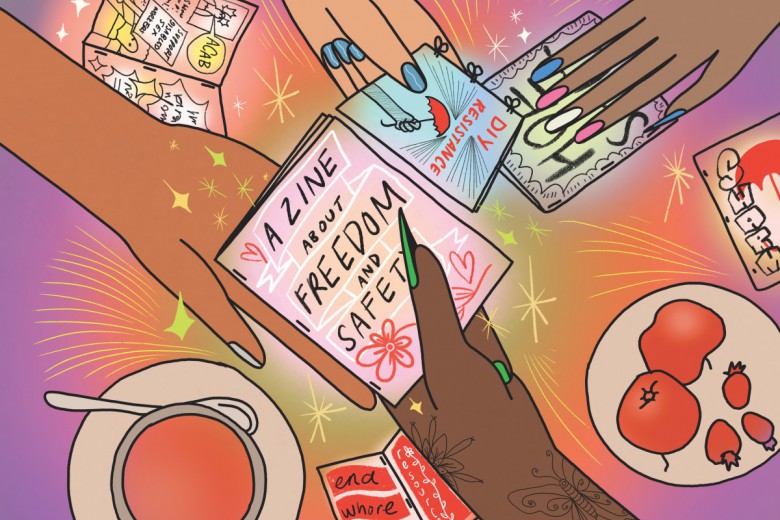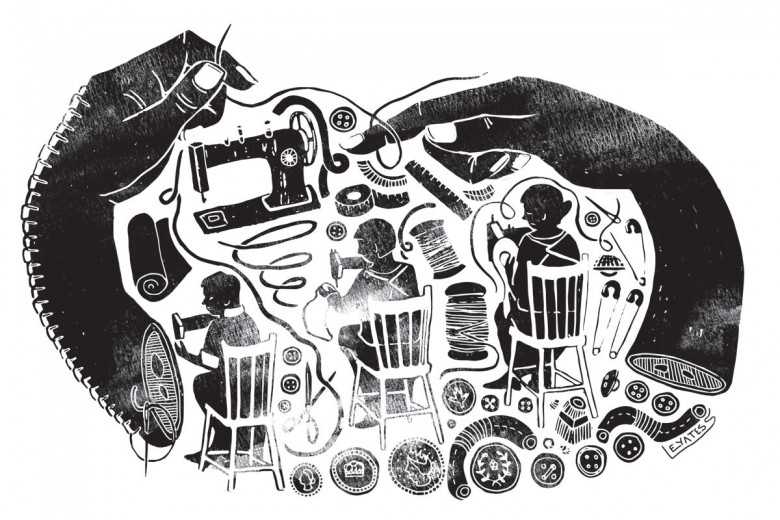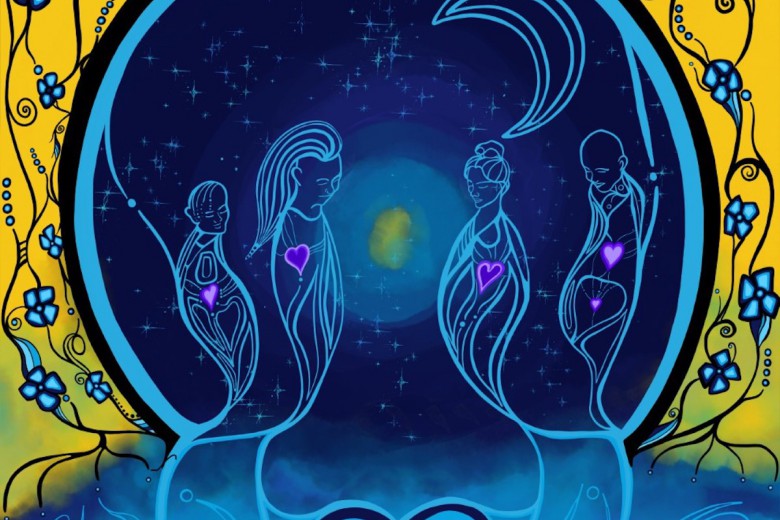
I was 14 years old, riding a Parisian metro on a Friday evening, no doubt bound for some teenage mischief. The peace of my journey was interrupted when a woman wearing a burqa entered the compartment, accompanied by her husband and young son. The three of them, visibly tourists, looked at the metro maps in clear view of everyone else in the car.
This is a scene that occurs many times a day in Paris: tourist families mapping out their routes in the web of the metro underworld. But this family was different; the protagonists were atypical. I remember my horror at the whisperings, the looks, the nudges, and even some finger pointing at the woman in the burqa. A woman sitting across from me sighed exasperatedly and mumbled something about “these Arabs” and how they treat their women.
I was embarrassed and angry at this family for having entered this very public realm of which I was a part. I didn’t want my co-commuters to be judging all Muslim women relative to this one with her covered face. It was challenging enough to be a Muslim teen in Paris without having to take on this iconic image of the burqa-clad woman that had disturbed the cultural uniformity on that metro car. Feeling resentment for her and the response she was eliciting, I looked away, hoping she would disappear quickly.
The Muslim woman is often portrayed as lacking agency, subjugated and controlled by the men in her life. Trapped behind a veil, vulnerable to honour killings, her body is seen as a dominated space, one over which she apparently has no control. This is a common stereotype. It crops up frequently in Western media, especially when military offensives in Muslim countries are in the offing, and the oppressed Muslim woman is paraded about as justification for military intervention.
The burqa, chador or niqab (henceforth used interchangeably), a loose-fitting robe worn by some Muslim women that covers the body from head to toe, is one of the most powerful symbols of women’s subjugation under Islam. This garb is often presented as an existential threat to the West, capable of destabilizing the very foundations of our liberal democracies.
This message was reinforced in October 2009 when a Canadian organization called for a ban on the burqa. Surprisingly, this demand came from the Muslim Canadian Congress, a self-proclaimed progressive organization that stated: “The Muslim Canadian Congress (MCC) is asking Ottawa to introduce legislation to ban the wearing of masks, niqabs and the burka in all public dealings… . [N]ot only is the wearing of a face-mask a security hazard and has led to a number of bank heists in Canada and overseas, the burka or niqab are political symbols of Saudi inspired Islamic extremism.”
Such a demand seemed odd when other issues of concern to Muslims were burning up the headlines, including government resistance to Omar Khadr’s repatriation, the war in Afghanistan, Muslim Canadians imprisoned abroad, and human rights concerns around security certificates. One has to question: is the MCC’s request really about protecting the Canadian public? (After all, how many bank heists have been undertaken by burqa-clad bandits?) Is it made in the name of emancipating Muslim women? Is liberation from the burqa really a pressing issue for them? Or is the MCC’s statement symptomatic of another tendency: some Muslims reproducing the same othering they have experienced in the Western world within Islamic groups, so as to render themselves acceptable to the general (Western) public at the cost of further isolating a disenfranchised group of women?
In non-Muslim circles, the opposition to the burqa has been open and vocal. French President Nicolas Sarkozy has stated the burqa is “not welcome” in France and that it reflects “women’s subservience.” In Switzerland, the image of the burqa was used in propaganda materials to support a constitutional ban on building minarets. In Belgium, many cities have prohibited face coverings, fining women who offend. In the United States, a rule adopted by the Michigan Supreme Court may allow judges to demand that witnesses remove their religious hair coverings while testifying. And in Quebec, the question of banning the head scarf in public service jobs was raised in provincial legislature by l’action démocratique du Québec and the Parti Québécois. However, this subject is not only taken up by politicians eager to weigh in on what the ideal citizen’s aesthetic should be. It is also a bête noire of some Western feminists who see the burqa as a threat to women’s autonomy and to the political gains made by feminists in the last few decades.
Indeed, the debate over Muslim women’s attire in the West has been shockingly one-sided. Few questions have been posed about why we equate visible hair and short skirts with women’s liberation or with greater access to power. The voices of women in burqa are seldom included in the dialogue — rather, these women merely become mere objects in our subjective narrative. Their bodies — their covered bodies — become fodder for our assumptions about their repression. “They” are made into one big category, an amorphous symbol of generalized oppression. What is rarely noted is that “they” as a category are not permitted to participate in this discussion. Just like the unseen patriarchs who are assumed to be cloaking women in repressive garb, many of us feminists make Muslim women’s bodies a screen upon which we project our politics and fears. Instead of opening a dialogue about the desires, aspirations and power struggles of this group of women, we substitute the burqa as a totem of all that we oppose. No one really asks those who wear it: hey, would you feel more emancipated if that thing was off your head?
The marginalization of burqa-wearing women in Canada and other Western nations is no real surprise. After all, the attire stands out in stark contrast to our mosaic of polar fleece. More surprising is how this narrative of the repressed woman is picked up, repackaged and reproduced within immigrant communities from the Global South. The crusade against the burqa is presented in Muslim circles as a progressive discourse reflecting modernity and Western know-how. A new dichotomy is thus created: the modern, free, Western Muslim woman who repudiates the traditional, shrouded Muslim woman. This dichotomy is not unlike the division between the stereotype of the free, modern Western woman and Muslim women in general — it just allows some Muslim women into the privileged space.
The Muslim Canadian Congress, which has often mirrored the language of the Conservative government on issues such as the Israeli assault on Gaza in 2008, and which lauded the cutting of funding for the Canadian Arab Federation after Minister Jason Kenney got into a name-calling match with its president, is not alone in calling for a burqa ban. Feminist reporter Mona Eltahawy began her op-ed in the International Herald Tribune with the words: “I am a Muslim, I am a feminist and I detest the full-body veil, known as a niqab or burqa. It erases women from society and has nothing to do with Islam but everything to do with the hatred for women at the heart of the extremist ideology that preaches it.” This perspective is further echoed by Quebec feminist Djemila Benhabib, who has described the burqa as a tool for extremists. When the Fédération des Femmes du Québec did not support a ban on the hijab in the Quebec public service, Benhabib condemned them for “sacrificing millions of women who are fighting for their lives.”
Though valid as personal opinions, these statements rely on broad and sweeping assumptions about the experiences and stories of Muslim women who wear the burqa. In Eltahawy’s description, women are “erased” by the burqa, while Benhabib portrays all burqa-wearing women as being controlled by fundamentalists. Such blanket judgments leave no space for the diverse needs and wants of traditional Muslim women to be articulated, and the packaging of their bodies becomes the only topic of discussion. Single stories are presented as universal truths, rendering the affected women more invisible and less entitled to express their own wants and needs.
Contrary to Eltahawy’s point, women who have independently chosen to don the burqa in the West are anything but invisible. It is, in fact, their very visibility and their obvious rejection of mainstream dress codes that creates a sense of discomfort for many. The burqa is unfamiliar, stark, mysterious and unknown, and does not blend in neutrally. Portraying the wearing of the burqa as a symbol of male, religious militarism, as Benhabib does, discounts any other reason that a woman might want to wear it: for identity, cultural values, political symbolism, anti-consumerism, protection, countering the hyper-sexualization of women or religious belief. Both Benhabib’s and Eltahawy’s objections do exactly what they accuse the burqa of doing: they silence burqa-wearing women and deny them agency by imposing one narrative on their behaviour.
There is no doubt that many women are coerced or pressured to don the burqa or are required by law to wear it — Afghanistan under Taliban rule being a prime example. Such coercion should of course be resisted. However, in other places, women have been forced to remove their coverings, making some feel as exposed as if they had publicly bared their breasts. In 1936, the Shah of Iran banned the burqa, giving rights to police officers to tear off burqas with scissors and knives in order to “modernize” women. In Turkey today, women wearing the burqa are not allowed to attend public universities. Strict decrees one way or the other are equally corrosive of women’s autonomy.
Key to this story of the wrapped-up and controlled Muslim female body is the marginalization that many Muslim women have experienced in mainstream Western circles — a marginalization that is now being replicated by some privileged Muslims. After years of struggle in which women of colour, low-income and lesbian women have challenged their “othering” by white, middle-class feminism in Canada, we now see parallel inequities being reproduced within Muslim feminism.
The most alarming thing about the new othering of (some) Muslim women is not that there is a public difference of opinion. Indeed, we should welcome dissent and dialogue — for all women are not the same, nor should they have the same opinions. Rather, it is that white, middle-class feminism, which has excluded many who come from other social, ethnic and religious groups, has come to represent the model of feminism being espoused by immigrant communities in the Global North. Instead of carving out an authentic feminist path, where the focus lies on autonomy, agency and anti-oppression, some Muslim feminists have allowed cosmetic issues like the burqa to take precedence over more bread-and-butter issues.
And reproducing this divisive discourse pays off in the West. Although challenging the burqa in other parts of the world can involve serious risks for women, burqa bashers in the West are widely celebrated. When the Muslim Canadian Congress issued its statement, the story made headlines in all three national newspapers. When women such as Irshad Manji, author of The Trouble with Islam Today, or Ayaan Hirsi Ali, author of Infidel, pen their books, they remain on bestseller lists for a handsome period of time, basking in media attention. It is popular for Muslim women to denounce other women within the Muslim community as backwards and proclaim oneself a progressive; it is far more difficult to speak out against broader marginalizations and one’s role in reproducing them.
Progressive women in Muslim communities must question whether they are simply mirroring broader societal inequalities and further isolating already-marginalized women when they request bans on women’s attire. There will always be differences of opinion around the burqa. Some will find it vile and imposing, others will find it liberating not to share their cosmetic selves in the public realm; some will find it incompatible with Islam, others integral to their faith. The point is to foster a safe space where these differences of opinion lead to a conversation with, and empowerment of, those most affected rather than to exclusionary demands. The focus has to be on the agency of women rather than on their objectification. Single stories should not be used to deny or dismiss the multiplicity of women’s experiences. The politics of the burqa, whether through its imposition or through a ban, should not be a weapon for alienating women and limiting their choices.
Being from the Global South does not insulate one from reproducing oppressive discourses. As feminists from the Global South become more influential, armed with degrees from prestigious British, American and Canadian universities and well-versed in polished English, they must remain open to the opportunities to break from the historical trajectory of previous Western feminist movements, to carve out novel feminisms. A Muslim woman wearing a full-length “burqini” in a Parisian pool may have been called “archaic” by the mayor of Paris in August 2009, but feminists must be willing to listen to that burqini wearer’s voice to avoid being guilty of the same oppressions.
Perhaps we can take a cue from the Council of American-Islamic Relations-Canada (CAIR-CAN), which lobbied against the burqa ban, emphasizing the need to focus on rights rather than limitations:
“[I]f a segment of Canadian Muslim women believe that wearing the niqab is part of their religious practice, then they must be allowed to freely do so. The principle must be extended to all religious practices, provided the practice does not infringe upon the fundamental rights of others. The marginalization of Muslim women must be countered with public education and anti-discrimination efforts, not with the state’s dictation on how one may dress, which only serves to further marginalization instead.”
Riding the metro in Paris, my sensitive 14-year-old self reflected and amplified the discomfort of those around me. The object of my angry embarrassment became that burqa — and the woman wearing it. Today, though, I would be frustrated not by that woman’s clothing choices, but by the assumptions fuelling the contempt of my co-commuters: their intolerance and their fear of difference.






